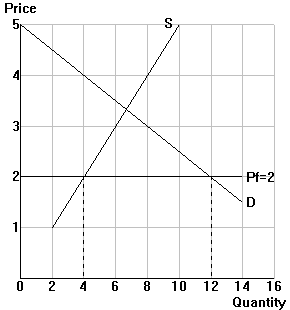
| Jim Whitney |

| Table 1 | ||
| Situation in the U.S.: | Free trade | QR |
| Price | ||
| Quantity produced | ||
| Quantity consumed | ||
| Quantity imported | ||
| Table 2: QR consequences versus free trade | ||||
| Quota | VER | |||
| Area in graph | Amount | Area in graph | Amount | |
| Change in consumer surplus | ||||
| Change in producer surplus | ||||
| Domestic quota rents | ||||
| Change in national welfare | ||||